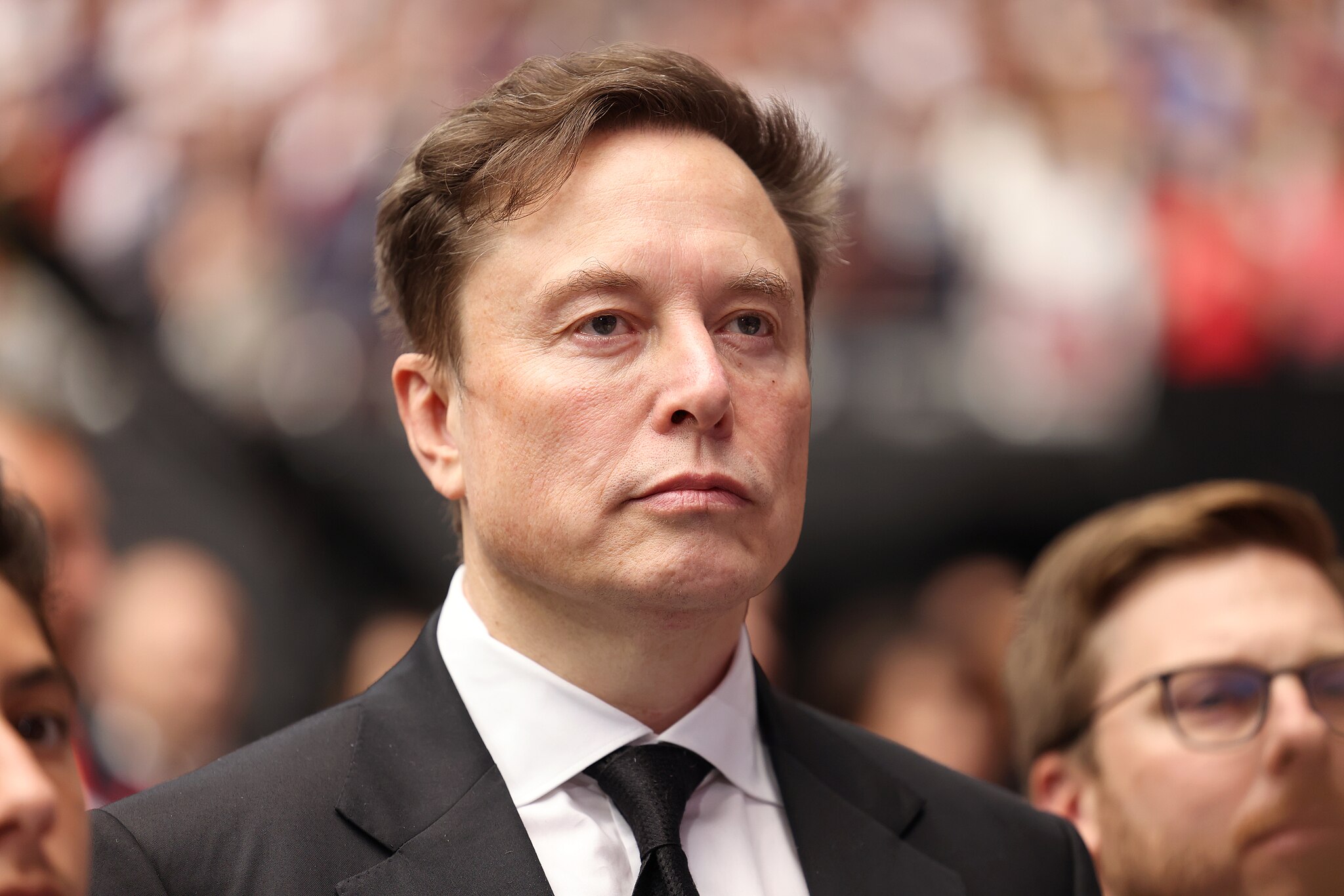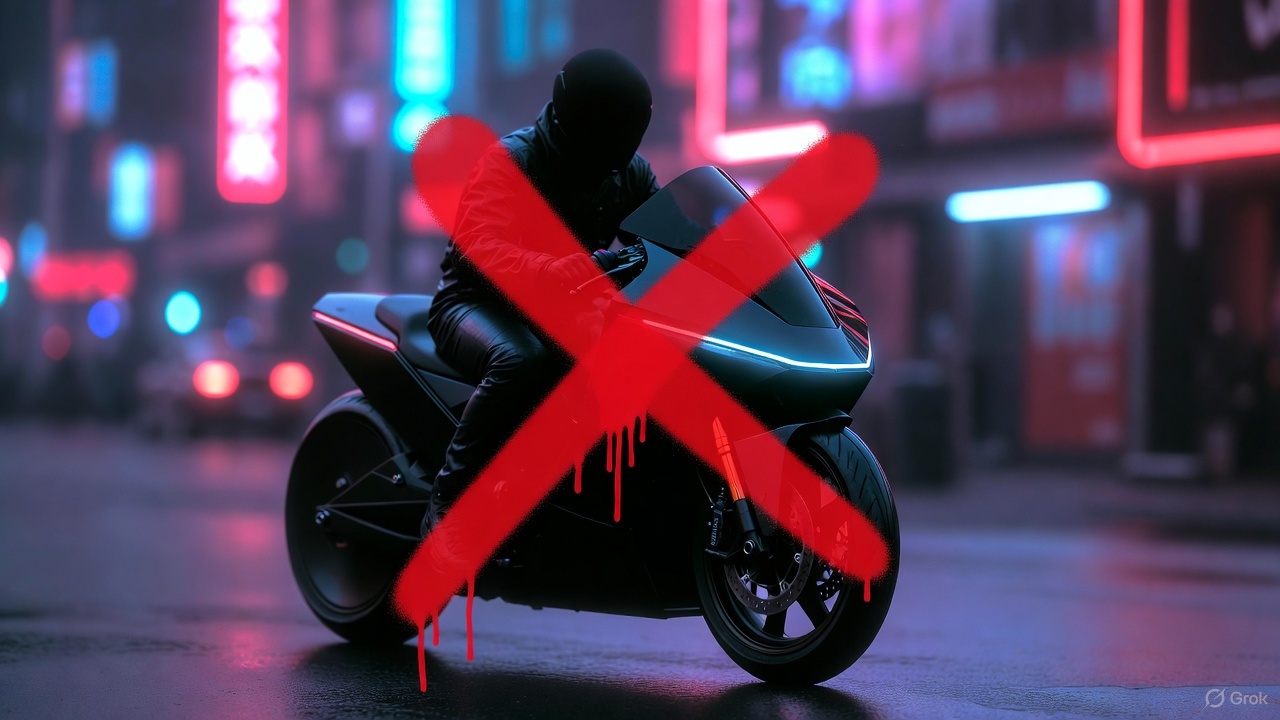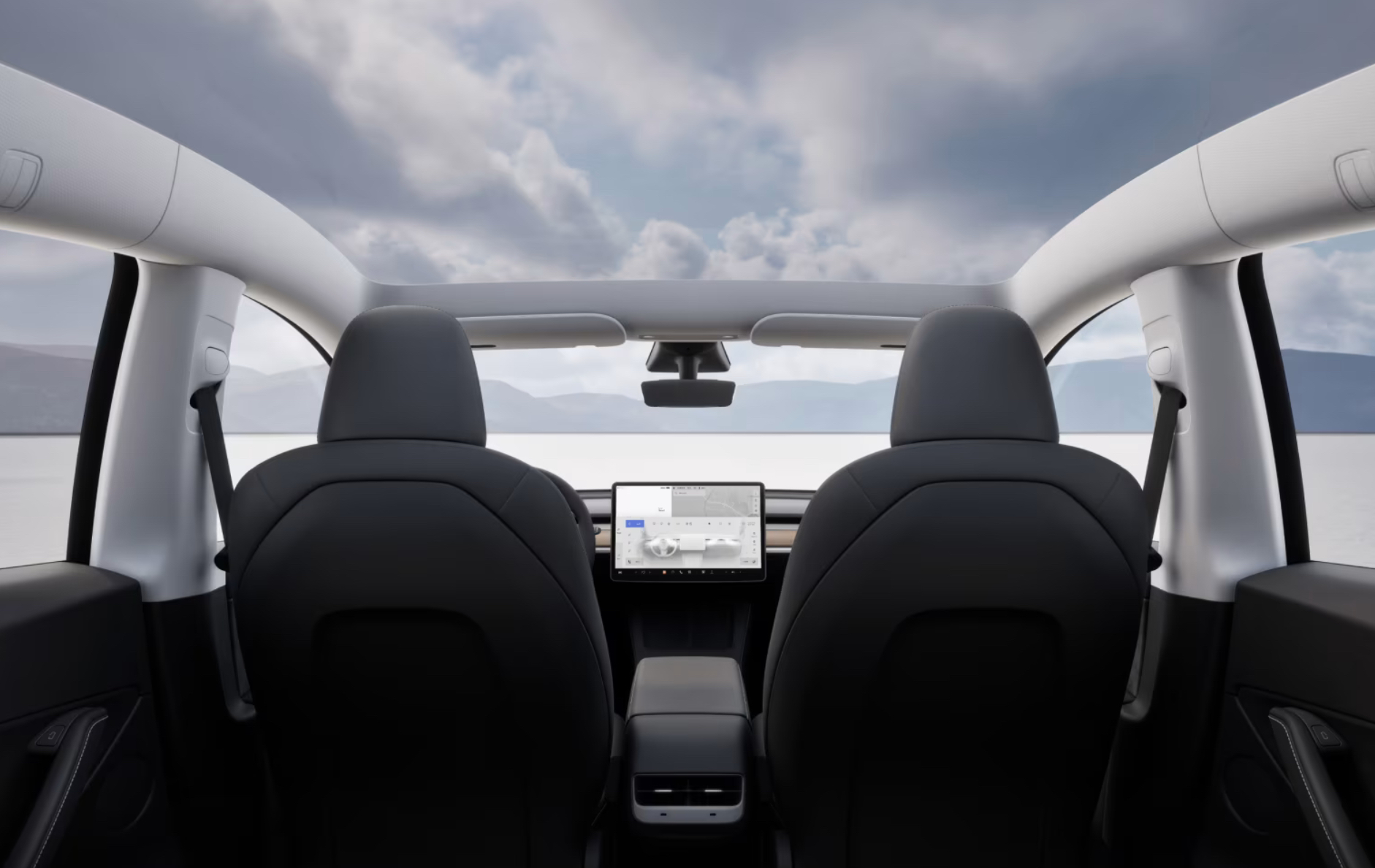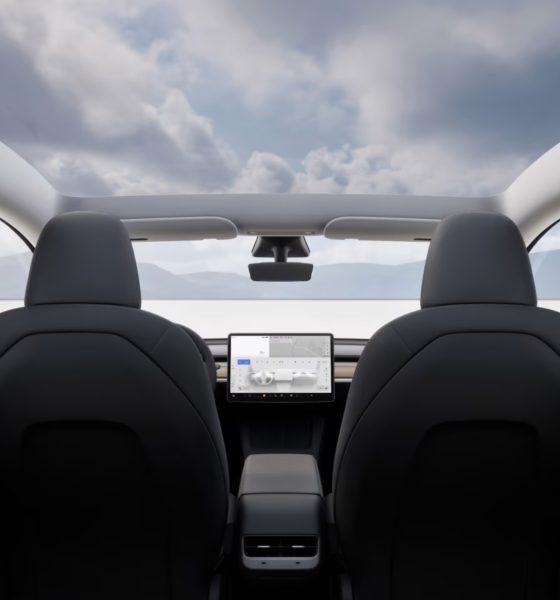Tesla has made a handful of small changes to its owner’s manuals with the recent holiday update, including a shift to how Autopark works, cabin radar monitoring, and an expansion of certain construction details, among other edits still.
On Monday, Not a Tesla App spotted and reported a handful of the changes seen in Tesla’s owner’s manuals that were not reported in the company’s holiday update release notes. Some of these include subtle feature changes or hints as to what other features may be coming, while many of them simply have different wording than was previously in the manual.
Typically, Tesla will make changes to the owner’s manuals when it debuts new software updates, and although the recent holiday update has offered owners a number of new features, some of those that weren’t reported by the company may be equally important.
You can check out the unlisted updates to the owner’s manual below, complete with new rules for Autopark, the removal of a previously-retired regen braking mode, expansions to certain navigation construction information, and more.
Note: the links navigate to various sections of Tesla’s Model Y owner’s manual, though these updates can be seen across the company’s lineup.
Tesla’s recent changes to the owner’s manual, both big and small
Cabin Radar now used for occupancy, rather than seat sensors
Tesla’s Cabin Radar, located just above the rearview mirror in the latest of the company’s vehicles, is now being used to detect cabin occupancy instead of the individual seat sensors, as was changed earlier this year. Over the summer, Tesla switched from using the seat sensors to using the cabin radar to monitor occupancy, as part of a response to a recall mandating closer passenger and driver monitoring.
The section now also includes a warning that blocking or obstructing the device will disengage Autopilot or Supervised Full Self-Driving (FSD). You can see the entry for cabin radar in Tesla’s owner’s manual here.
Camp Mode: text added to indicate that ports still work
While Tesla has already changed its vehicles so that the USB and 12V ports still work when Camp Mode is engaged, the company has also now updated the owner’s manual text to indicate this. You can see the company’s new details on Camp Mode here, under its section on Operating Climate Controls.
Construction and Accident Alerts to expand
Tesla has been adding additional icons to the map for road closures, accidents, and construction, and while the text in this section previously said they were limited to the U.S., this section has now been removed—suggesting that Tesla could be looking beyond North America with these in the near future.
Not a Tesla App also points out that, in all likelihood, Tesla will just need to wait for more data providers to partner with the company to add this information in other markets than the U.S. and Canada. You can check out this part of the owner’s manual here, in the Maps and Navigation section under the Online Routing section.
Desiccant Bags details removed
Tesla has removed details on its desiccant bag in the heat pump’s A/C section, which previously required a replacement every four years. This could suggest that this service may not be necessary after all, as the hardware likely lasts far more than four years in most cases. You can see the Maintenance Service Intervals section that previously had the instructions here.
Front Camera Window Cleaning
Tesla now points out that owners should clean the inside of the windshield within the front camera housing every so often. This was not previously a required maintenance option, and Tesla now says owners should schedule a service appointment to have the cleaning done when necessary.
There’s also a DIY option for this cleaning, and details for this can be found in the service manual under “Quad Camera Cover – Upper (remove and replace).” You can find the new text for cleaning inside the windshield here in the Maintenance Service Intervals section, listed under Periodic Checks.
Parental Controls now auto-set to these features
Tesla has made the default speed limit setting “Relative” with an offset of plus 5 mph. Additionally, when drivers select “Require Safety Features” in the parental controls, the system now automatically enables the following options, without the ability to change or remove them:
- Automatic Emergency Braking
- Obstacle-Aware Acceleration
- Automatic Blind Spot Camera
- Blind Spot Collision Warning Chime
- Automatic 911 Call
- Allow Mobile Access
- Park Assist Chimes
- Lane Departure Avoidance: Set to Assist.
- Speed Limit Warning: Set to Chime.
- Speed Limit: Set to Relative.
- Offset: Set to +5 mph (8 km/h).
- Forward Collision Warning: Set to Early.
You can find the Safety and Security Settings here, with the above options now located under Parental Controls.
Regenerative Braking options ‘January 2024’ wording removed
While Tesla removed the low regenerative braking setting for new vehicles in January, opting for the higher-efficiency option as default, the company’s owner’s manual has removed a section saying that the low options wouldn’t be available after January 2024. This suggests that Tesla could someday re-introduce multiple regen options in the future in some way, shape, or form.
Tesla’s regenerative braking instructions can be found here, as part of the Braking and Stopping section.
Steering Wheel Weight
Tesla has changed the name of the steering wheel weight option from “Medium” to “Standard,” which you can see here under the Steering Wheel Weight section.
Strikes No Longer Count Against Autopark
Vehicles that include a cabin camera can get as many as five strikes before banning Autopilot features, while those without one can get up to three strikes. However, Tesla has apparently removed the Autopark system from these strike-out rules, meaning that striking out won’t disqualify drivers from the automated park system. You can see Tesla’s Autopark section here.
Valet Mode Privacy Improvements
Tesla has improved the privacy features of its Valet Mode, now preventing access to a handful of features while it is engaged, such as showing text messages even if the owner is still connected to Bluetooth. The vehicle will now also remove home and work address access in this mode, and it will restrict access to driver profiles and a number of other features that could potentially compromise someone’s privacy.
You can check out the Tesla owner’s manual’s section on Valet Mode here, under the larger Driver Profiles section.
What are your thoughts? Let me know at zach@teslarati.com, find me on X at @zacharyvisconti, or send us tips at tips@teslarati.com.
Tesla rolls out new commands feature for better connectivity
Need accessories for your Tesla? Check out the Teslarati Marketplace:

News
Tesla’s new Holiday perk is timed perfectly to make FSD a household name
Tesla AI4 owners get FSD (Supervised) through Christmas, New Year’s Eve and well into the post-holiday travel season.

Tesla quietly rolled out a free Full Self-Driving (Supervised) trial for roughly 1.5 million HW4 owners in North America who never bought the package, and the timing could very well be genius.
As it turns out, the trial doesn’t end after 30 days. Instead, it expires January 8, 2026, meaning owners get FSD (Supervised) through Christmas, New Year’s Eve and well into the post-holiday travel season. This extended window positions the feature for maximum word-of-mouth exposure.
A clever holiday gift
Tesla watcher Sawyer Merritt first spotted the detail after multiple owners shared screenshots showing the trial expiring on January 8. He confirmed with affected users that none had active FSD subscriptions before the rollout. He also observed that Tesla never called the promotion a “30-day trial,” as the in-car message simply reads “You’re Getting FSD (Supervised) For the Holidays,” which technically runs until after the new year.
The roughly 40-day period covers peak family travel and gatherings, giving owners ample opportunity to showcase the latest FSD V14’s capabilities on highway trips, crowded parking lots and neighborhood drives. With relatives riding along, hands-off highway driving and automatic lane changes could become instant conversation starters.
Rave reviews for FSD V14 highlight demo potential
FSD has been receiving positive reviews from users as of late. Following the release of FSD v14.2.1, numerous owners praised the update for its smoothness and reliability. Tesla owner @LactoseLunatic called it a “huge leap forward from version 14.1.4,” praising extreme smoothness, snappy lane changes and assertive yet safe behavior that allows relaxed monitoring.
Another Tesla owner, @DevinOlsenn, drove 600 km without disengagements, noting his wife now defaults to FSD for daily use due to its refined feel. Sawyer Merritt also tested FSD V14.2.1 in snow on unplowed New Hampshire roads, and the system stayed extra cautious without hesitation. Longtime FSD tester Chuck Cook highlighted improved sign recognition in school zones, showing better dynamic awareness. These reports of fewer interventions and a more “sentient” drive could turn family passengers into advocates, fueling subscriptions come January.
Elon Musk
Elon Musk predicts AI and robotics could make work “optional” within 20 years
Speaking on entrepreneur Nikhil Kamath’s podcast, Musk predicted that machines will soon handle most forms of labor, leaving humans to work only if they choose to.

Elon Musk stated that rapid advances in artificial intelligence and robotics could make traditional work unnecessary within two decades.
Speaking on entrepreneur Nikhil Kamath’s podcast, Musk predicted that machines will soon handle most forms of labor, leaving humans to work only if they choose to.
Work as a “hobby”
During the discussion, Musk said the accelerating capability of AI systems and general-purpose robots will eventually cover all essential tasks, making human labor a choice rather than an economic requirement. “In less than 20 years, working will be optional. Working at all will be optional. Like a hobby,” Musk said.
When Kamath asked whether this future is driven by massive productivity growth, Musk agreed, noting that people will still be free to work if they enjoy the routine or the challenge. He compared future employment to home gardening, as it is something people can still do for personal satisfaction even if buying food from a store is far easier.
“Optional” work in the future
Elon Musk acknowledged the boldness of his claim and joked that people might look back in 20 years and say he was wrong. That being said, the CEO noted that such a scenario could even happen sooner than his prediction, at least if one were to consider the pace of the advancements in AI and robotics.
“Obviously people can play this back in 20 years and say, ‘Look, Elon made this ridiculous prediction and it’s not true,’ but I think it will turn out to be true, that in less than 20 years, maybe even as little as ten or 15 years, the advancements in AI and robotics will bring us to the point where working is optional,” Musk said.
Elon Musk’s comments echo his previous sentiments at Tesla’s 2025 Annual Shareholder Meeting, where he noted that Optimus could ultimately eliminate poverty. He also noted that robots like Optimus could eventually provide people worldwide with the best medical care.
Elon Musk
Elon Musk reiterates why Tesla will never make an electric motorcycle
Tesla CEO Elon Musk preemptively shut down speculations about a Tesla road bike once more.

Tesla CEO Elon Musk preemptively shut down speculations about a Tesla road bike once more, highlighting that the electric vehicle maker has no plans to enter the electric motorcycle market.
Musk posted his clarification in a post on X.
Musk’s reply to a fun AI video
X user @Moandbhr posted an AI video featuring the Tesla CEO on the social media platform, captioning it with “Mr. Elon Musk Just Revealed the Game-Changing Tesla Motorcycle.” The short clip depicted Musk approaching a sleek, single-wheeled vehicle, stepping onto it, and gliding off into the distance amid cheers. The fun video received a lot of traction on X, gaining 3.1 million views as of writing.
Musk replied to the post, stating that a Tesla motorcycle is not going to happen. “Never happening, as we can’t make motorcycles safe. For Community Notes, my near death experience was on a road bike. Dirt bikes are safe if you ride carefully, as you can’t be smashed by a truck,” Musk wrote in his reply.
Musk’s Past Comments on Two-Wheelers
Musk also detailed his reservations about motorcycles in a December 2019 X post while responding to questions about Tesla’s potential ATV. At the time, he responded positively to an electric ATV, though he also opposed the idea of a Tesla road-going motorcycle. Musk did state that electric dirt bikes might be cool, since they do not operate in areas where large vehicles like Class 8 trucks are present.
“Electric dirt bikes would be cool too. We won’t do road bikes, as too dangerous. I was hit by a truck & almost died on one when I was 17,” Musk wrote in his post.
Considering Musk’s comments about dirt bikes, however, perhaps Tesla would eventually offer a road bike as a recreational vehicle. Such a two-wheeler would be a good fit for the Cybertruck, as well as future products like the Robovan, which could be converted into an RV.











